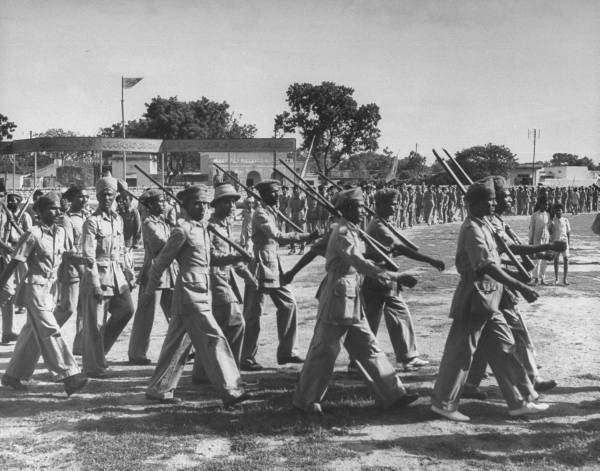Summary
The Razakars, a paramilitary force in Hyderabad State during the British Raj, were instrumental in resisting integration into India and upholding Muslim rule. Led by Qasim Razvi, they committed atrocities against Hindus and opponents of Muslim rule. Despite repeated demands from India, the Nizam refused to disband them. India’s ‘police action’ led to their surrender, with Razvi seeking asylum in Pakistan. The legacy of the Razakars remains contentious, with some viewing them as defenders of Muslim interests and others as perpetrators of violence and oppression. Their story reflects the complexities of power and identity during the Indian independence era.
Unraveling the History of the Razakars: A Saga of Power Struggle and Violence
Introduction to the Razakars
The Razakars, a paramilitary volunteer force, emerged as a formidable entity within the Hyderabad State during the British Raj. Founded in 1938 by Bahadur Yar Jung of the Majlis-e-Ittehadul Muslimeen, this force gained prominence under the leadership of Qasim Razvi, particularly during the tumultuous period of Indian independence. With a mandate to uphold Muslim rule and resist integration into India, the Razakars became synonymous with brutality and oppression.
The Standstill Agreement and Resistance
During the period of November 1947 to August 1948, as Hyderabad stood under a Standstill Agreement with India, repeated demands were made to disband the Razakars, which were adamantly rejected by the Nizam. When India launched an armed invasion, termed a ‘police action,’ the Razakars became the primary resistance against the Indian Army. However, following the Nizam’s surrender, the Razakars were disbanded, and their leader, Qasim Razvi, faced incarceration before seeking asylum in Pakistan.
Context and Political Landscape
The Hyderabad State, ruled by the Nizam, grappled with the dilemma of joining either India or Pakistan upon independence. However, the Nizam’s desire for independence led to a gradual shift towards theocratic governance. The Majlis-e-Ittehad-ul-Muslimeen (MIM) wielded significant influence, advocating for Hyderabad as a Muslim state and marginalizing the political aspirations of Hindus and progressive Muslims.
Violence and Oppression
The Razakars, serving as the militant arm of the MIM, unleashed a reign of terror, brutally suppressing armed revolts and eliminating dissenting voices advocating integration with India. Hindus and sympathizers faced persecution, prompting mass exodus to safety. The Razakars’ actions, characterized by atrocities and intimidation, instigated widespread fear and instability.
The End of an Era
Operation Polo marked the decisive moment in the annals of Hyderabad’s history, as India undertook military action to annex the state. Following the surrender of the Razakars, Hyderabad was integrated into the Indian Union, signaling the end of the Nizam’s rule and the dismantling of the Razakar regime. The subsequent establishment of civilian governance under Indian administration heralded a new chapter in the region’s trajectory.
Also read: Hong Kong Takes Action Against MDH and Everest Products
Legacy and Reflections
The legacy of the Razakars remains a contentious subject, with divergent narratives shaping perceptions of their role in history. While some view them as defenders of Muslim interests against perceived Hindu dominance, others condemn their actions as instruments of oppression and violence. The release of films like “Razakar – Silent Genocide of Hyderabad” underscores the enduring relevance of this chapter in popular culture, inviting introspection and dialogue on its complexities.
The saga of the Razakars stands as a testament to the complexities of power, identity, and resistance in the tumultuous era of Indian independence. As historical narratives continue to evolve, it is imperative to critically examine the legacy of the Razakars, ensuring a nuanced understanding of their impact on the region’s socio-political landscape.
(Source: historical documentation)
Last Updated on April 23, 2024 10:08 am by Admin




